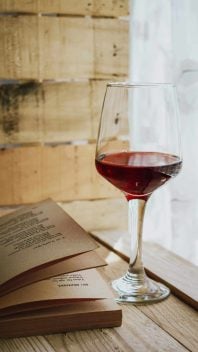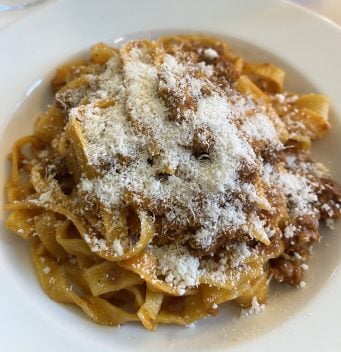The chef
His dishes are intimate and light, speaking to the heart, coming from the heart. Stefano Baiocco, 43, has a solid CV behind him, including the Enoteca Pinchiorri in Florence, Alain Ducasse of Monaco, Pierre Gagnaire in Paris, and the Rossellinis of Palazzo Sasso in Ravello. In between there have been many experiences around the world: Le Manoiraux Quat’Saisonsof Raymond Blanc in Oxford, in Paris, Pascal Barbot’s Astrance, in Japan, Ryuginof Seiji Yamamoto and Kikunoiof Yoshihiro Murata (3 Michelin stars). He worked in Spain at Celler dei Roca, at Mugaritzwith Andoni Luis Aduriz, with Quique Dacosta and at Ferran Adrià’s Bulli. The range of chefs, styles, trends, culture, techniques and traditions he has observed seems complete.
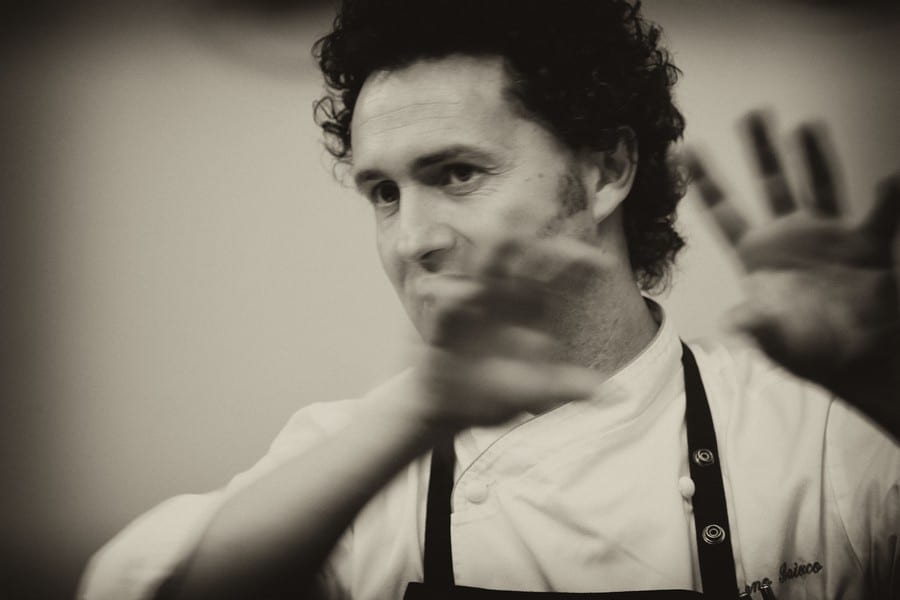
Emotions and sentiment from the lake
All come into play at Villa Feltrinelli on Lake Garda. His idea of food and cucina is simple. “Cucina makes sense only if we have someone with whom to share our emotions.” This is a double perspective – you can look at it from the stove or from the table, but it always involves sharing and emotions. Baiocco goes on, “I love a clean feeling on the palate and in the dish. I don’t use too many elements, and I try to keep them well-defined. In each of my recipes there must be something that can stimulate reflection on the part of the person who’s eating, encouraging them to think.” And then, there’s the pleasure of the ingredient. He is dedicated to herbs, which he studies and collects personally, working with other foods to transform them into an original and well-defined whole. He takes particular care with the chromatic element in each dish, so that each plate resembles a painting. His dishes demand attention, like art in a gallery. They require comprehension, assimilation, pondering, not so much as an intellectual exercise as to inspire empathetic, emotional, sensitive participation. Stefano Baiocco’s cucina is both immediate and constructed, light and deep. His is a stress-free table. If he’s asked to mention a painter he admires, he has no doubts. Botticelli.

“They often ask me what I want from my cooking,” Baiocco says. “I realized I have an almost carnal, physical rapport with my dishes. I think that depends on the limited number of guests we serve. It’s a little like inviting friends home. Up to a certain number of dishes, I manage to truly feel what’s inside, as if each one had my voice. I lose this emotional feeling, and the plate becomes a product, even if it’s perfect, if I exceed that amount. Cooking is a means of expression for me. I’m interested in the sensations of those who eat here, with me. I like to understand what they desire, what fascinates them. I would like to affect their thoughts because I think that gastronomy is more in the head than in the belly.”
The recipes
Avocado Cannellone
Ingredients
A ripe avocado
Avocado oil
Peel the avocado. Using a potato peeler, slice only the outer layers of the fruit and arrange them on oven-proof paper, brushing them delicately with avocado oil.
Goat cheese cream
1 round of Valle Belbo goat cheese (about 250 g)
50 g goat milk
Strain the cheese and beat it lightly with a whisk to incorporate air. If necessary, add goat milk. Spoon the cream into a pastry bag.
Tomato gazpacho
800 g datterino tomatoes
80 g red bell peppers
60 g celery sticks
60 g red onions
60 g cucumbers
1 bunch basil
100 g ice
16 g ginger root
15 g extra-virgin olive oil monocultivar Casaliva
1.5 g xantana
18 g Maldon salt
6 g ground white pepper
Cut all ingredients (except xantana) into small cubes and marinate for 12 hours. Pass through a food mill and then through a fine chinois strainer or cheesecloth. Add xantana and delicately beat into soup with a whisk without incorporating air or leaving lumps.
Macadamia nuts
Toast nuts and grate with a microplane grater.
Coriander oil
250 g sunflower seed oil
70 g fresh coriander leaves
30 g parsley leaves
10 g toasted coriander seeds.
Blanch herbs in boiling water for 5 seconds and then plunge into ice.
Blend in a thermomix the oil, herbs, and seeds for 10 minutes at 50°C/122°F. Filter and cool.
Herbs
Lobelia erinus flowers, French marigolds
With the help of the oven paper, roll the avocado strips around the goat cheese, forming a cannellone. Place in refrigerator. Spoon gazpacho into a soup plate, place cannellone on top, finish dish with coriander oil, flowers and Macadamia nuts.
Rice
4 servings
240 g Carnaroli rice
20 g shallot confit
80 g dry white wine
1 kg tomato water
Toast the rice in a base of shallot confit, add dry white wine and heat with tomato water. Cook for 14-16 minutes. Stir in tomato popcorn and lemon zest. Allow to rest for 1 minute before serving.
Shallot confit
500 g shallots
120 g extra-virgin olive oil
1 sprig lemon thyme
Julienne shallots and cook slowly in 120°C/250°F oven with olive oil and thyme in a covered casserole. Stir from time to time. Put aside.
Tomato water
4 kg datterini tomatoes
16 g salt
4 g pepper
8 sprigs of Genoese basil
Blend the tomatoes and season with rest of ingredients. Leave in fridge overnight to decant through cheesecloth. It produces about 1.3 kg of transparent tomato water.
Tomato popcorn
250 g tomato water
250 g olive oil
1 gelatin leaf (3.5 g)
1 g salt
Dissolve the gelatin and salt in tomato water. Emulsify with olive oil and place in a syphon with three charges. Syphon the contents into a stainless steel bowl containing liquid nitrogen. Preserve in freezer. Use this popcorn to blend into risotto as a substitute for the classic butter and Parmigiano Reggiano. (If you don’t have nitrogen, chill the syphon very well and syphon into rice.)
Black olive pebbles
50 g of black olive oil
17 g maltodextrin
Blend oil and maltodextrin slowly with a whisk until it forms little pebbles. Roast in a non-stick pan.
Black olive oil
200 g dried pitted black olives
200 g extra-virgin olive oil
Place ingredients in a Pacojet and micro-puree. Filter the oil obtained through a chinois or cheesecloth strainer.
Confit tomatoes
1 kg of Cencara tomatoes
5 g coarse salt
8 cloves unpeeled garlic
2 sprigs thyme
Peel and seed tomatoes. Cut each into four sections. Season and bake in 90°/200°F oven for 3 hours. Slice the sections with a disk 2 cm in diameter.
Ponzu sauce
100 g mirin (sweet cooking sake)
100 g lemon juice
100 g soy sauce
4 g agar agar
Dissolve agar agar in mirin and bring to a boil Add soy sauce and cool. Add lemon juice. Mix the gelatin that forms.
Red shrimp
4 Sicilian red shrimp
Shell the shrimp, slice in three, and season with extra-virgin olive oil, Maldon salt, white pepper and lemon zest.
Hot yuzu sauce
Yuzu kosho (obtainable in shops selling Japanese food products)
Place a dab of this cream under each shrimp.
Herb
Southernwood (Artemisia abrotanum)
Place risotto in the center of a plate, dot with spicy yuzu sauce and arrange dressed shrimp on top. Complete with tomatoes, ponzu sauce, black olive pebbles and southernwood.
Cinta Senese Pork
Pork
½ Cinta Senese pork belly (about 1 kg)
Coarse salt equaling 10% weight of pork
5 g black Sarawak pepper mignonette
100 g butter
60 g extra-virgin olive oil Leccino cultivar
1 aromatic bouquet (rosemary, sage, lemon thyme, bay leaf)
Place pork in a deep dish, sprinkle with coarse salt and leave to marinate for 5 hours. Remove salt with running water, cut into portions and vacuum pack with the rest of the ingredients. Cook for 17 hours in water at controlled temperature of 70°C/160°F. Plunge into water and ice. Score the rind and brown meat with a little oil in a non-stick pan until the skin is crisp.
Salt-roasted beets (per portion)
1 baby beet
200 g coarse salt
50 g butter
1 sprig rosemary
Wrap beet, salt, butter and rosemary together in an aluminum foil package. Bake in a standard oven for 40 minutes at 200°C/390°F.
Beet vinaigrette
500 g apple vinegar
500 g red wine
300 g sugar
500 g grated beets
50 g extra-virgin olive oil Leccino cultivar
Heat vinegar, wine and sugar until reduced by 2/3. Add beets and leave in infusion for 4 hours. Strain and beat with extra-virgin olive oil.
Devil sauce
100 g sweet-hot Thai sauce
100 g soy sauce
40 g yakitori (soy and garlic sauce)
2 cloves garlic in thin slices
6 g sliced ginger root
6 chopped spring onion stalks
3 g red curry paste
Mix all ingredients and leave to marinate for 12 hours. Strain and reduce to a syrupy consistency.
Beet powder
1 beet
Slice the beet with a mandolin and dry in a food dryer or an oven at low temperature, max 60°C/140°F.
Malabar Spinach
Use only the black fruit of Malabar spinach
Herbs and flowers
False shamrock (oxalis triangularis), wood sorrel (oxalis acetosella), chickweed (stellaria media), salad burnet (sanguisorba minor), costmary (tanacetum balsamita), red-veined dock (rumex sanguineus), nasturtium (tropaeolum majus ), Kenilworth ivy, (cymbalaria muralis), Malabar spinach (basella alba), borage, rosemary, pineapple sage (salvia rutilans/elegans), lobelia (lobelia erinus), bush daisy (euryops pectinatus)
Dress the herbs with the cooked pork fat, Maldon salt and kaffir (or combava) lime zest
In the center of a flat plate, place a teaspoon of devil sauce. On it place the pork belly divided into 4 portions, the just-seasoned herbs and flowers. Dip the baby beets and the Malabar spinach fruit in the beet vinaigrette and arrange around the pork. Decorate with a line of beet powder.
Yogurt semifreddo
Yogurt semifreddo
45o g whole milk yogurt
375 g Italian meringues
450 g heavy cream (35% fat)
10 g gelatin leaves
Combine the yogurt and Italian meringues, mixing well. Soften the gelatin, dissolve it in a little cream and add to the yogurt mixture. Half-whip the cream and combine the two. Turn the mixture into 3- cm in diameter steel tubes lined with acetate sheets. Flash freeze. Remove from tubes and slice into 4-cm long cylinders.
Celery and green apple gelatin
1 bunch celery
5 Granny Smith apples
100 g sugar
6 g agar agar.
Centrifuge celery and green apples to obtain 400 g liquid. Combine agar agar with sugar and bring to boil with 200 g of centrifuged liquid. Remove from heat and add the other half of the liquid. Cool in fridge. When solidified, mix and place in pastry bag.
Basil gelato
470 g whole milk
40 g heavy cream (35% fat)
100 g sugar
13 g glucose
27 g powdered milk
13 g butter
5 g stabilizer for gelato
Bring milk, sugar, glucose, powdered milk and gelato stabilizer to 90°C/195°F. Cool to 50°C/122°F, then add cream and butter. Blanch basil, add to gelato and leave in refrigerator for 12 hours. Place mixture in a Pacojet container, freeze and pacotize. Transfer gelato into small bonbon-shaped molds.
Basil bonbon icing
200 g cocoa butter
200 g white chocolate
2 drops natural green food coloring gel
Melt the mixture, heating it to 40”C/105°F. Ice the basil bonbons well, covering them completely. Keep in freezer.
White chocolate and yogurt icing
200 g heavy cream (35% fat)
300 g white chocolate
200 g whole milk yogurt
Melt cream and white chocolate. Heat to 50°C/122°F, add to yogurt, blend well, cool in fridge and transfer to a pastry bag.
Yogurt cookies
50 g butter
50 g powdered sugar
50 g flour (200 W)
20 g powdered yogurt
1 g salt
Blend all ingredients, work into cylinders and flash freeze. Grate the still-frozen dough onto a silpat sheet and bake at 140°C/285°F for about 6 minutes. Store in a dry place.
Yogurt/yuzu
100 g low-fat yogurt
5 g of grated yuzu (Japanese citrus fruit)
Mix and save in a pastry bag.
Green oil
250 g sunflower seed oil
50 g Genoese basil
50 g mint
30 g parsley
Blanch the herbs for a few instants in boiling water. Plunge into water and ice. Squeeze well, mix with oil and process in a Thermomix for 10 minutes at 50°C/122°F. Strain through a chinois or cheesecloth strainer inside an ice-cold container.
Green apple
1 Granny Smith apple
Using a Japanese mandolin, slice shavings of green apple.
Herbs and flowers
Wood sorrel, (oxalis acetosella), Genovese basil, mint, shiso (perilla frutescens), celery leaves, mint flowers
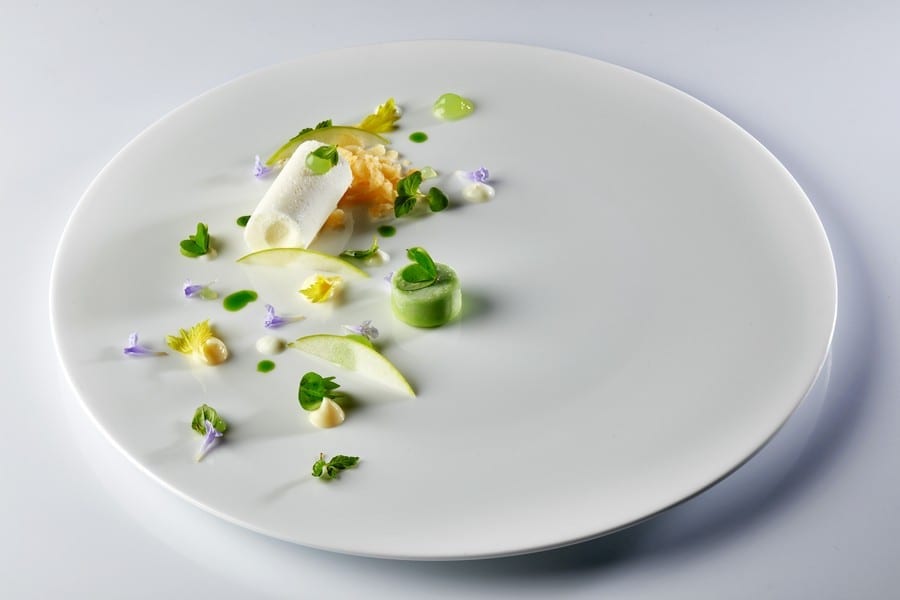
Prepare the dessert: create a chromatic array with the icing, the gel, and the yuzu yogurt, arranging spoonfuls of various sizes on the plate. Spoon semifreddo onto the icing and place the basil bonbon on a dab of celery and apple gel. Place a tablespoon of yogurt biscotto on a corner of the semifreddo, completing it with lemon zest. Finish the plate with harmoniously arranged drops of green oil, herbs and flowers.
By Francesco Seccagno

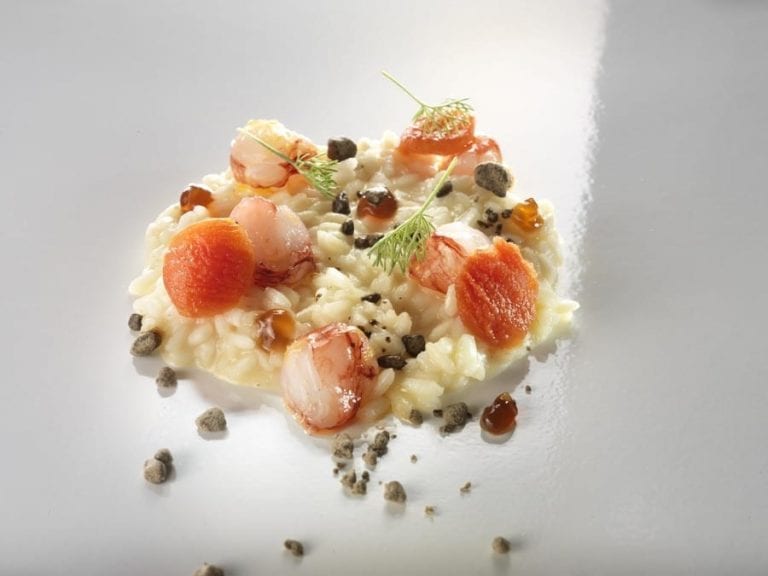

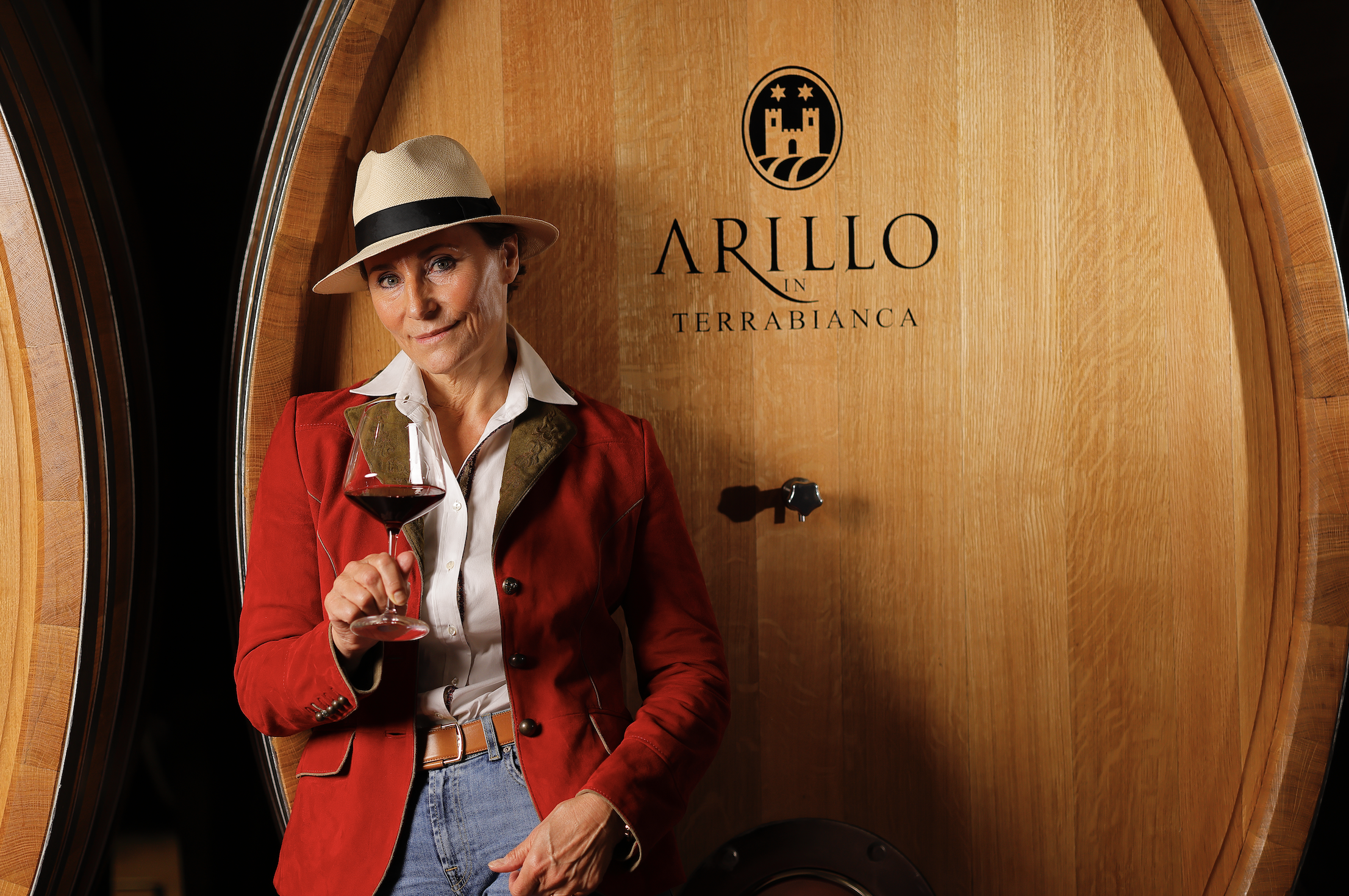 Why Arillo in Terrabianca's organic approach is paying off
Why Arillo in Terrabianca's organic approach is paying off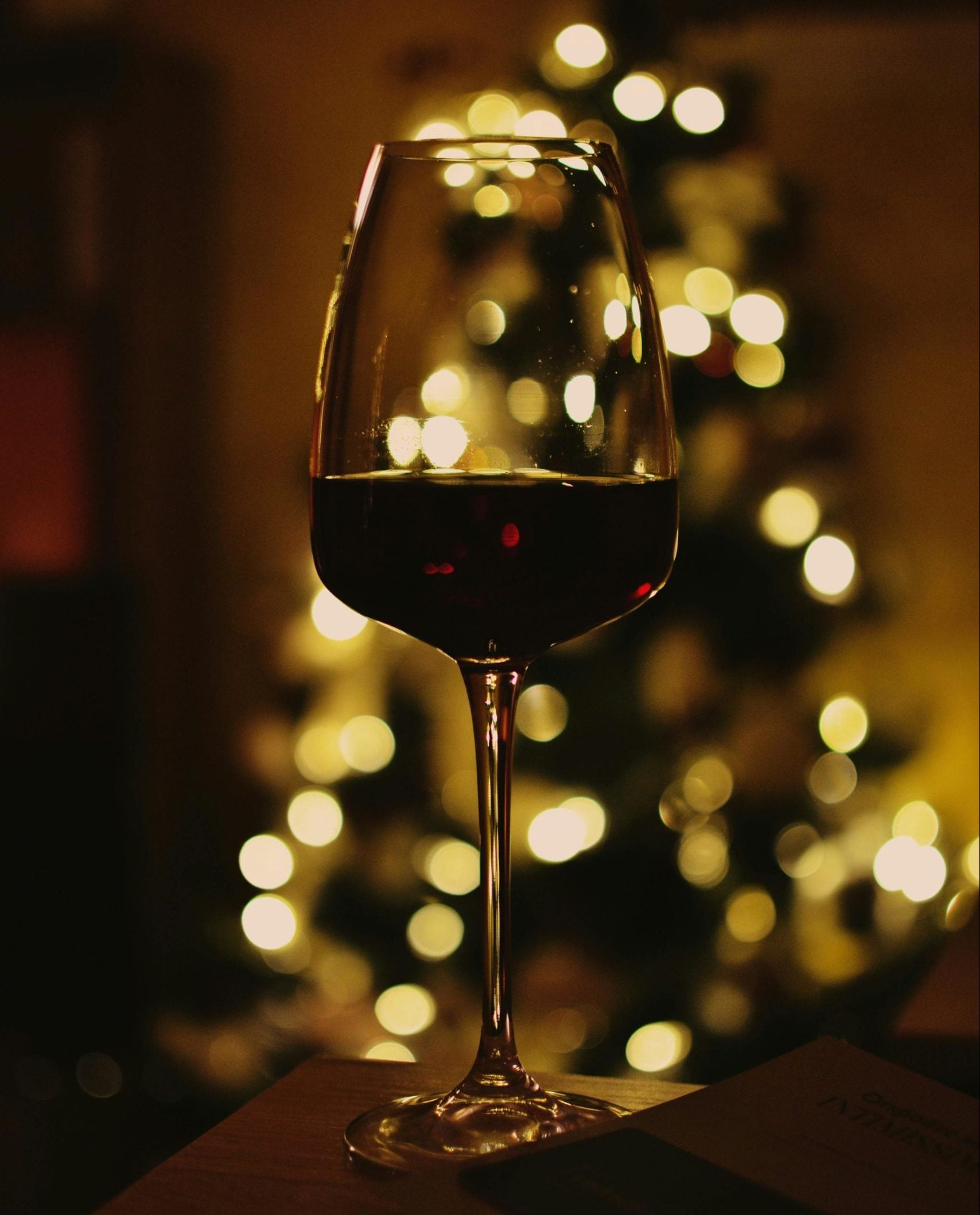 What do sommeliers drink at Christmas?
What do sommeliers drink at Christmas? The alpine hotel where you can enjoy outstanding mountain cuisine
The alpine hotel where you can enjoy outstanding mountain cuisine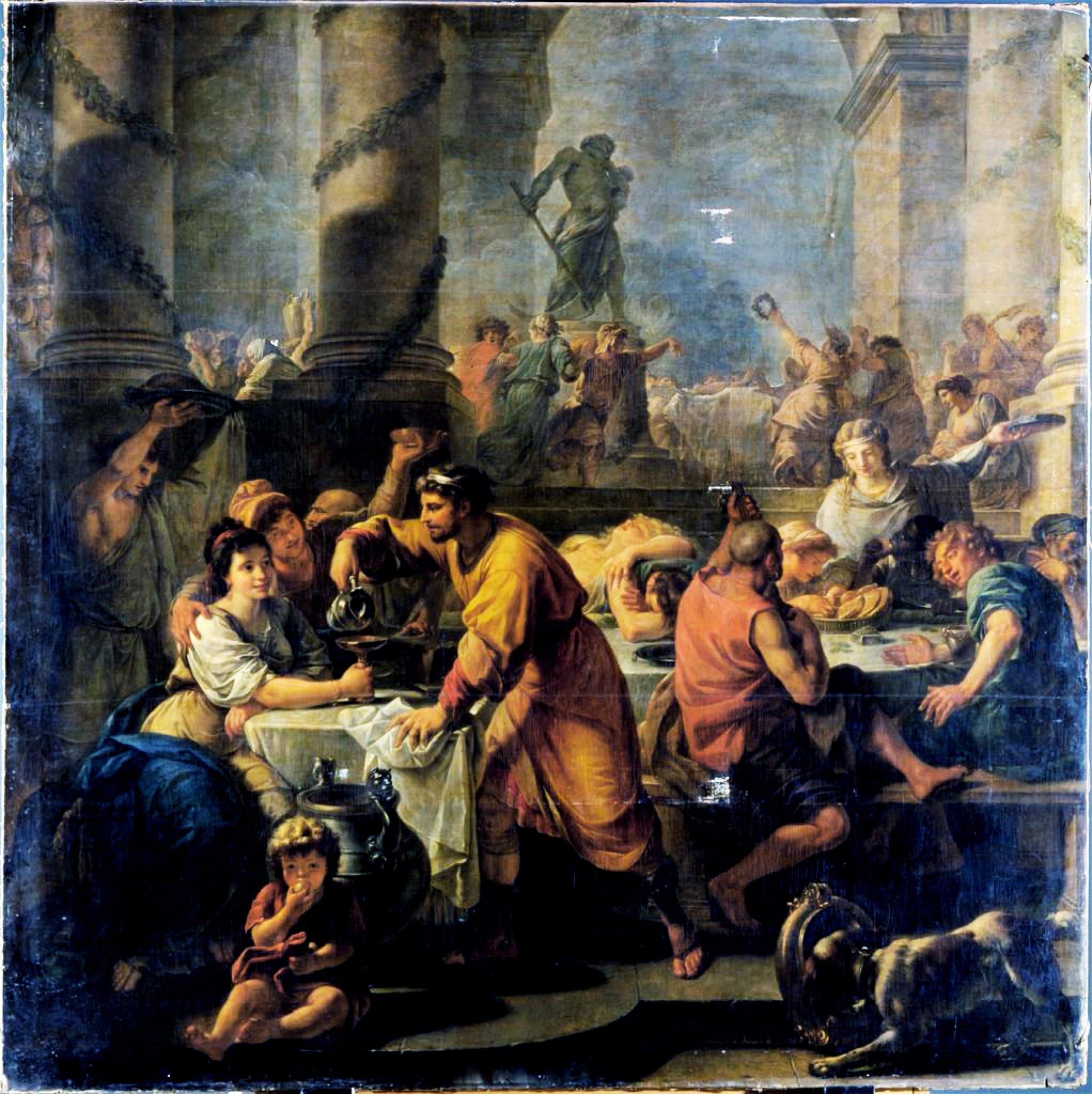 Io Saturnalia! How to celebrate the festive season like an Ancient Roman
Io Saturnalia! How to celebrate the festive season like an Ancient Roman
